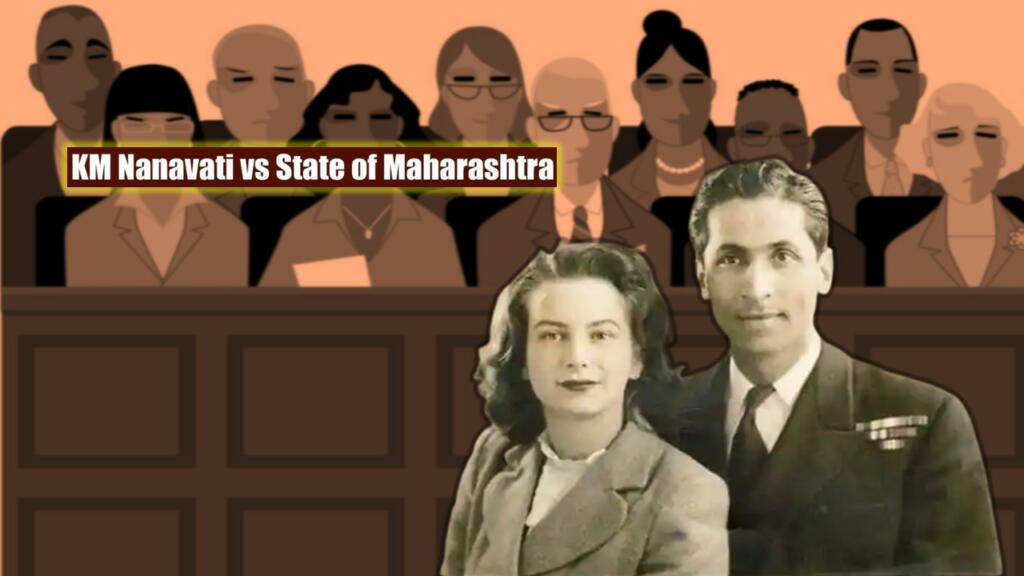KM Nanavati vs State of Maharashtra Case: Panch, this is the word Indians use for collective wisdom. A different form of it was introduced by Britishers for their own benefits in the British-made Indian legal system. Jurors and judges used to sit together. Unfortunately, the practice could not continue in politically independent India. The infamous Nanavati case was one of the final but biggest nail in its coffin.
Infamous KM Nanavati vs State of Maharashtra Case
In April 1959, Naval Commander K.M. Nanavati came to know about his wife’s affair with a businessman named Prem Ahuja. The fact that it was going on while he was on national duty was another pain point. Within 3 hours of his wife Silvia’s confession, an enraged Naval Officer shot Ahuja dead. Fully trusting the Judicial process, he surrendered to the Police.
Also read: A CJI Chandrachud decision that we totally stand with
The KM Nanavati vs State of Maharashtra Case became a national headline as Nanavati knew the Nehru-Gandhi family well. The national media covered it with wild and unprecedented enthusiasm. The case took a sharp turn when Nanavati admitted that he did shoot Ahuja, but only when he disrespected his wife and refused to take care of their children in case they marry. Public opinion was largely in favour of Nanavati and so was the jury. Out of two sections, namely Section 302 and Section 304, the jury found him not guilty of murder under Section 302. Out of 9 eminent individuals in the Jury, 8 were overwhelmingly in favour of Nanavati.
Meanwhile, the sessions judge did not agree with the Jury’s verdict and referred the case to Bombay High Court. Section 307 of CrPC facilitates such transfer. The High Court did find Nanavati guilty under draconian Section 302. Finally, it went to the Supreme Court.
Also read: Tukaram vs State of Maharashtra: The case whose aftermath introduced misandry in IPC
Issues before Apex Court and how it tackled them
The Apex Court had to decide on several issues. One of them was whether the High Court could decide on facts of the KM Nanavati vs State of Maharashtra Case or would examine only merits of reference made by the Sessions Court. It also needed to check whether the Jury had misdirected and, if yes, whether the High Court could strike the decision aside. Another burden was determining whether Nanavati was telling truth or not regarding his heat-of-the moment shooting of Ahuja.
Regarding the High Court’s jurisdiction under Section 307, the Court held that if the Sessions Judge disagrees and considers Jury’s opinion as contrary to what could have been reached by a reasonable man, he could refer the matter. It then quashed any chances of the High Court not having power to examine evidence.
To reach these conclusions, the Court used a plethora of literature. These include the history of Jury trials in English common law, Ramanugrah Singh case, Akhlakali Hayatalli case, Ratan Rai case, Sashi Mohan Debnath case and Emperor v. Ramadhar Kurmi case.
Then the Apex Court checked whether the Jury was misdirected. It did agree with the High Court’s conclusion that Jury were indeed misdirected.
Also read: Mobarik Ali Ahmed vs State of Bombay, 1957: Foreign nationals under the grip of IPC
Castigating remark on Jurors
The only question left was checking the veracity of the claim made by Nanavati. Upon examining the evidence, the Supreme Court did not agree with the “heat of the moment” theory. Nanavati had three hours to plan and prosecute it in cold blood. He did it calmly. Moreover, he did not tell anyone until the trial that he killed him in rage and not deliberately. The Apex Court also indirectly chided the jury by stating that no reasonable group of men would have given the verdict in favour of Nanavati.
The observation became virtually a death knell for the credibility of jury trials in India. Months before the Nanavati trial kicked off, the Law Commission had termed the jury system a failure. In the Commission’s view, it was an absolute failure since they advocated for its abolition. After the trial, the voices for abolition amplified, and the government of India concurred. Despite that, it continued for a few years, which was pointed out by the 1969 report of the Law Commission. The last jury trial was held in the Calcutta High Court in 1973.
Finally, in 1974, the CrPC was amended to end jury trials in India. With it, the voices of the people stopped reaching the courts. Now, the courts only decide on facts, evidence, and judicial interpretations. Despite that, there is a lot of uproar against judicial pronouncements, which raises questions over the effectiveness of scuttling people’s voices in the judicial system.
Support TFI:
Support us to strengthen the ‘Right’ ideology of cultural nationalism by purchasing the best quality garments from TFI-STORE.COM
Also Watch:
https://www.youtube.com/watch?v=RZY8mjdJCK4
